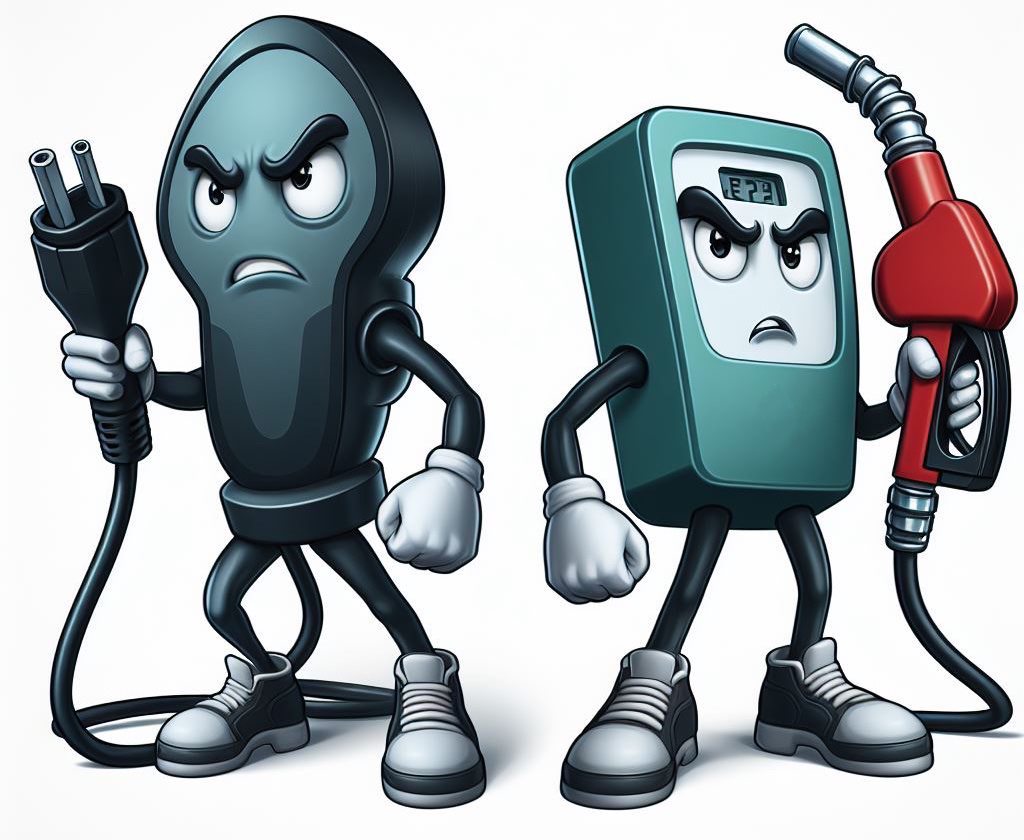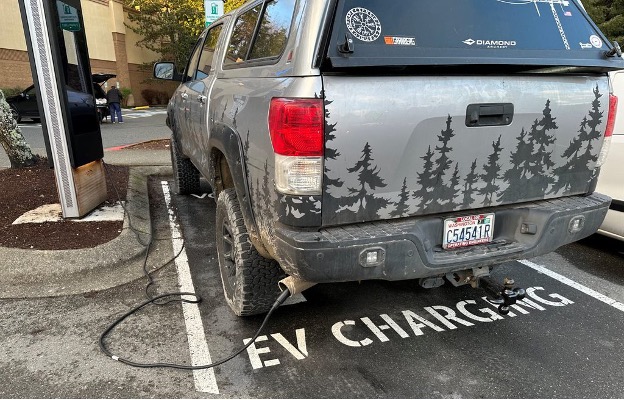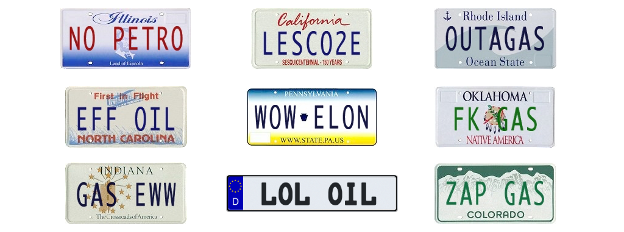
Everywhere we look today, we see controversy. Our world is plagued by multiple wars, we’re experiencing growing income inequality, and America is more politically divided than any time since her Civil War in 1861. Despite all this conflict, people seek out opportunities to divide and debate, often for senseless reasons.
There is a perfect example of this extremism in tech with the religious wars between Windows™ PC and Mac™ enthusiasts. For decades, they have argued that their operating system is the ultimate for personal computing. In hindsight, we see that each had advantages and disadvantages and there was room for both in the market and the endless debate changed nobody’s mind. Neither did the endless Ford versus Chevy debate, nor the Democrats versus Republicans.
I’m fortunate to work with some of mobility’s most important companies at this pivotal time of industry change. Mobility – both personal and commercial – feels like an area where we can have a meaningful positive impact on our planet’s future. One of the biggest global investments is in Electric Vehicles (EVs) and battery technology. Some of this change comes from government mandates supporting the slowing of our impact on the climate. Some from the auto industry itself, like Elon Musk’s Tesla. But the auto industry is not immune from extremism and the debate that comes with it. Yesterday’s “Ford versus Chevy” debate has evolved into a nauseating incarnation of extremist debates: Gas/diesel internal combustion engine (“ICE”) versus Electric Vehicle (“EV”) supporters.
Only a small percentage of drivers gravitate to the extremes. Most of us buy and drive what makes sense for us and ignore the not-so-great debate. To better understand the fueled-up fringe, let’s explore the religious war between ICE and EVs in the light of cost, viability, and extreme conditions’ impacts to understand why neither camp has it perfectly right or wrong.
There are many factors impacting the cost of a vehicle: purchase price, maintenance and repair, fuel, insurance, and more. Neither ICE nor EV runs away a clear winner when all the factors are considered. Yes, it is less expensive to fuel an EV even when gas prices are low in the USA:
According to Yale Climate Connections, The price of home charging an electric vehicle in the U.S., on average, is equivalent to $1.41 per gallon. But the story doesn’t end there. EV purchase prices tend to be markedly more expensive than their ICE equivalents. Ford’s F-150 Lightning electric truck averages $10,000 more than an ICE F-150 equivalent. Both Ford and Tesla failed to deliver on their initial promises of low entry cost for EV pickup trucks.
There are cost advantages to owning an EV (fueling, lighter service schedule), and to ICE vehicles (lower cost of entry, less expensive service). Neither extreme can claim absolute cost advantage.
Actual purchase price and cost of ownership data don’t dissuade either side from claiming financial disaster for the opposing owners. ICE drivers love every opportunity to point out that an EV battery pack can cost between $10,000 and $30,000 to replace. Never mind that they are warrantied for up to ten years by manufacturers and have no moving parts to break. Sure, cells go bad, but they are replaceable under warranty. EV owners drive by petrol stations with their noses in the air, and then immediately post online of their joy of never pulling in to fill up.
There is one cost that only the fringe extremist can fabricate: the loss of a few choice parking spots. To reclaim these precious few stalls, the practice of “ICE’ing” EV charging spots is becoming increasingly common. This involves ICE drivers parking their vehicles in EV charging stalls to prevent access from people who need to charge. This example comes from my own local grocery store, which recently added two EV charging spots near the store entrance.

In this case, the diesel driver had dozens of places to park. But instead of walking an extra fifteen feet, they decided to make a statement: they pulled into the empty EV charging stall and took the extra time to unhook the charge cable and shove it into their hot exhaust pipe. They earned a parking ticket and repairs to the charging system.
Many cost factors are real. The ones that the extremes target, like those who ICE charging spots, are nothing more than the temper tantrums of toddlers with drivers' licenses.
Both camps love to claim that the other’s platform is inviable. You’ll hear plenty of “EVs are useless in the winter!” and “Only a matter of time before gas hits $12/gallon!” The reality is that both types of vehicles are not only viable, but each has use cases at which they truly excel. ICE vehicles have been hauling us and our stuff for over a century. That massive head start has not prevented EVs from demonstrating viability with impressive early adoption numbers.
EVs and hybrids make up 16% of light duty vehicles in the United States. (source: U.S. Energy Information Administration)

That is one out of every six vehicles having some form of electric drivetrain and climbing quickly. Outside of the U.S., countries have even greater adoption. In 2023, Tesla’s Model Y was the best-selling car in Europe. It’s the first time an EV has captured that spot. Norway leads the world, with over 90% electrification.
This does not mean that 10% of Norway is “wrong.” Rather, commercial trucking and transport and heavy equipment utilize diesel and gas, which suits those applications better today. Across Europe, most vehicle sales are still ICE because it fits people’s lifestyles better. This is especially true of people living in urban areas where multi-tenant occupancy (apartments and condominiums) does not yet normally offer dedicated EV charging.
EV owners on the extremist fringe love to suggest that ICE vehicles are already inviable due to climate impact. They enjoy self-appointed elitism to project their planet-saving purchase, even though they are primarily financially secure alpha buyers, or those who are quickest to adopt new technology before all the kinks are worked out. In most cases, they are buying an EV as a second or third vehicle and have ICE backup. The elitism that this crowd exudes is as thick as the smoke from rolling coal. Look no further than their license plates to see it…

Their self-righteousness goes beyond the plates. EV-extremists gleefully ignore not only the rare elements that go into making a typical EV battery, but also the enormous petroleum cost of making a new car. Metals for body panels are mined via diesel equipment. The plastics throughout vehicles are made from petroleum biproducts. All these things are transported via gas and diesel trucks and rail. Buying any new vehicle is a tremendous hit to our environment, hardly a climate-saver. The best thing a vehicle buyer can do for the climate is not buy another new vehicle. Instead, drive the one you own for 10+ years and 125,000+ miles.
The most insipid of EV owners belittle those with gas or diesel engines, suggesting that they are either not conscious of climate change, somehow regressed or otherwise redneck, and anti-progress. They refuse to acknowledge genuine issues with their fuel of choice, including:
The blind dismissal of any use case EVs don’t support makes this group of vanity-plate-donning extremists every bit as frustrating and wrong as their ICE counterparts.
We see different solutions for different scenarios. Both equally right, neither entirely wrong. The same viability may soon apply to many other alternative fuel sources. For example, hydrogen fuel cells have a foot in either camp: electric motors propel the vehicle like and EV, but chemical reactions generate the power instead of it being stored in a battery… just like an ICE.
Towing and hauling are not the only scenarios where EVs lose credibility. In fact, freezing weather is all that is needed to highlight one of EVs’ fundamental weaknesses: varying range due to changing battery performance. Today’s lithium-based EV batteries can lose up to 50% of their range in low temperatures. Even 40°F will begin to cause range degradation. When you get down below zero, travel plans may have to change.
The recent cold snap in Chicago caused severe loss of range, slowed charging rates, and in some cases halted charging altogether. News outlets were quick to become anti-EV extremists,. The problems were real, but not at all exclusive to EVs. ICE vehicles suffer in freezing weather, just not as obviously as the range impact to EVs.
Backups of dead vehicles do, in fact, happen in the ICE world. A fitting example is the recent failure of dozens of gas-powered vehicles when a filling station in New Jersey was contaminated with water. With fuel tanks full of 58% water, all these vehicles had to be towed.
Cold-weather breakdowns happen to all sorts of vehicles and neither EVs nor ICEs are immune to environmental impact.
Other forms of extreme conditions are just now coming into reality. Low Emission Zones (LEZs) are gaining popularity in Europe. Rather than weather causing the impact, city planning is introducing zones where only low- or zero-emissions vehicles are allowed. The goal is to reduce pollution.
The most dangerous example of adverse driving conditions is artificially created by diesel drivers. In this dangerous and illegal activity, “Rolling coal” is the act of causing a diesel engine to spew thick exhaust onto another driver, bicyclist, or pedestrian. There are many examples documented online.
Extreme conditions caused by nature impact all types of vehicles and are understandable. Extreme conditions caused by drivers of any kind of vehicle are intolerable. Whether you display signs, roll coal, or ICE EV chargers, you are part of a group that is an embarrassment to drivers everywhere. We know that:
Drivers doing these things are saying,
“I want to spew pollutants! I want to send money to nations that would harm America! I want to be able to use those stalls and chargers and since I can’t, nobody can!”
It is time to look in the mirror and ask yourself exactly what you are fighting for.
In the automotive world today, we are rich in choices. Anyone shopping for a new or used vehicle has the choice of time-tested internal combustion. Even in that space, we can still choose between gasoline and diesel, whichever suits our needs best. Today’s reality is that society needs both ICE vehicles and EVs on the road, doing what each does well. That will change over time, but it’ll be an extended period of mixed powertrains.
Those who adopt new tech early, want to enjoy zero emissions, or value the quiet and quick ride that EVs offer can choose to drive an EV. Today, there are no laws requiring, or preventing, the purchase of any of these categories of vehicles.
Anyone insisting that only one answer is right for everyone today is confused by their inability to hear the experiences of others. Different drivers have different needs and values which are better solved by one type of vehicle or another. None of these scenarios are invalid because they reflect our real driving lives.
Advancing the mobility industry happens best when we listen and solve real-world problems. If we bring curiosity to the conversation, we will learn from others’ perspectives and create better solutions. The only voices that should be dismissed are the extremists who speak through the smoke of coal-rolling, the petulance of blocking access to chargers, or through their self-praising vanity plates.
Both ICEs and EVs will be on U.S. and worldwide roads for decades to come. In the meantime, the healthy approach is to understand and tolerate the cases where either excels and stay grounded in the facts. Give other drivers a bit of extra room no matter what they drive, stay curious about what is coming, and appreciate what has brought us this far.
Discover the latest breakthroughs and innovations in automotive technology and digital transformation with Envorso. Don't miss out on any updates! Sign up now to get the freshest insights and trends delivered straight to your inbox.